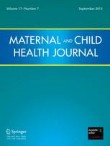
Abstract
Background
Adhesion formation is a major problem when a mesh is exposed to intraabodminal viscera, with potential severe complications (bowel occlusion, fistulas or abscesses). New methods for preventing adhesions from a polypropylene mesh placed intra-abdominally or to solve difficult situations, such as when the peritoneum cannot be closed during a TAPP repair for an inguinal hernia, are still being seeked. This study mimics in an animal model a situation that can be found in clinical practice during laparoscopic inguinal hernioplasty. A polypropylene mesh could be exposed to the intra-abdominal cavity even when the peritoneum is closed due to different circumstances, with no options to guarantee the prosthetic material of being exposed to the intrabdominal viscera. Different options have been suggested to solve these situations, being proposed in this study to cover the visceral surface of the mesh with an absorbable sponge containing thrombin, fibrinogen, and clotti ng factors (Tachosil®, Nycomed, Takeda, Osaka, Japan), to assess its use as a barrier to prevent postoperative adhesion formation.
Material and methods
Thirty Wistar white rats (300–450 mg) were included in this study as experimental animals, being randomized into three groups (A, B, and C). We performed a bilateral prosthetic repair with conventional polypropylene mesh (2 × 2 cm, 82 kD). Prosthesis fixation was performed as follows. Group A: absorbable suture; group B: metal staples; group C: metal tackers. A piece of insulating absorbable sponge (Tachosil® 5 × 5 cm) was placed to cover the visceral surface of mesh placed at the right side of each animal. After 10 days, we performed a gross examination (by laparoscopy and laparotomy), measuring the quantity and the quality of the adhesions. Samples were taken for histopathological analysis.
Results
Tachosil®-treated prostheses showed a statistically significant decrease in the quality of the adhesion found (p < 0.05). In addition, a smaller quantity of adhesions was identified in barrier-treated animals, although this lacked statistical significance. The histologic analysis showed no significant differences: more edema with the untreated mesh and increased angiogenesis and a lower degree of necrosis in mesh covered with Tachosil®.
Conclusions
The use of Tachosil® as a barrier material led to the absence of strong adhesions as it prevented direct contact between the mesh and the internal organs, preventing major problems associated with strong adhesions.




